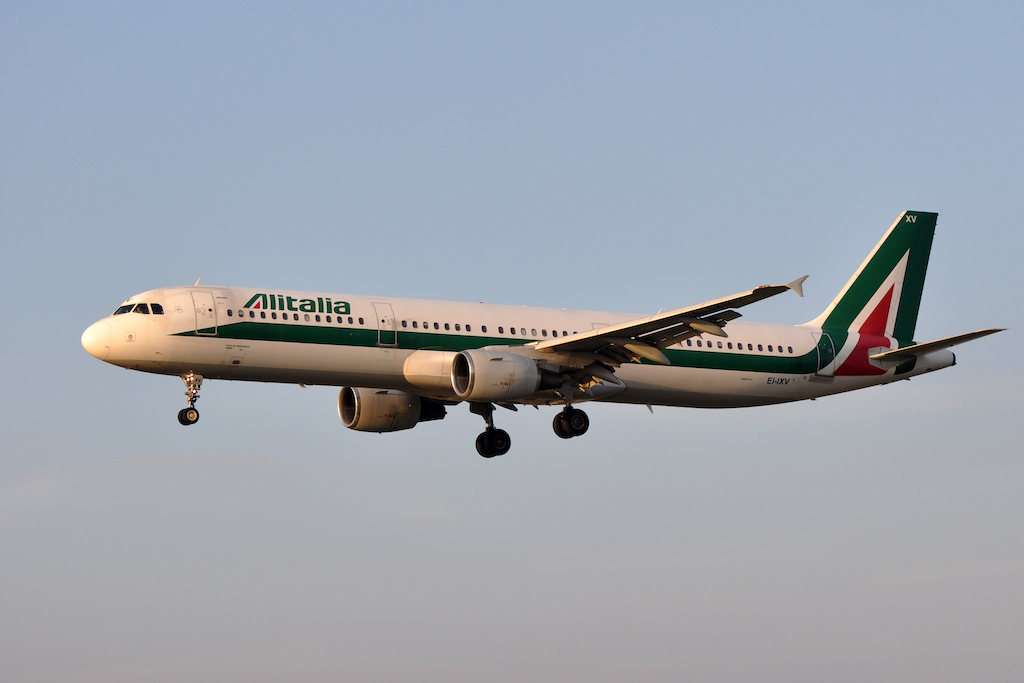Italy's New Airline Is Ready to Take Off Into a Changed Market This October

Photo Credit: Alitalia is set to fly its last flight in October when Italy's new national carrier ITA takes off. Flickr / ERIC SALARD
Italy's new national carrier Italia Trasporto Aereo (ITA) is set to take flight into a changed European marketplace this October under a new plan recently approved by European officials.
ITA will launch with the best — read most profitable — assets of failed state-owned carrier Alitalia, including airport slots, aircraft and routes, on October 15. The new carrier will operate from a hub at Rome's Fiumicino airport, as well as a secondary base at Milan's Linate airport, and serve key destinations in Europe as well as around the world pending the easing of Covid-19 travel restrictions. Alitalia is expected to cease operations the day before flights begin.
The launch is the culmination of the second largest airline restructuring in Europe during the coronavirus pandemic. The largest was Norwegian Air, which shed lost of its European flights and all of its long-haul service to emerge as a primarily local budget carrier in its namesake country earlier this year. However, while Alitalia was about half the size of Norwegian in terms of passenger traffic, it made up for that in historic cache having flown Italy's flag carrier since 1947. That history was also checkered by years of state aid and meddling that had made it one of Europe's least competitive carriers.
When ITA takes off it hopes to do so without much of the bloat that hobbled Alitalia. It will have just 2,750 to 2,950 staff compared with the more than 11,500 at its predecessor prior to the crisis. And ITA will not include Alitalia's former ground handling or maintenance businesses though it can bid on either or both through planned auctions.
These overhead cuts, as well as changes to its fleet and route network, gives ITA the optimism to forecast breakeven finances by the third quarter of 2023 and a €209 million ($247 million) profit before interest and taxes by 2025. For comparison, Alitalia has not turned a profit since 1998.
But ITA takes off into a changed Italian market. While some competition has disappeared, for example Norwegian's retrenchment and the shut down of Qatar Airways-owned Air Italy in February 2020, other competitors have used the crisis to expand in Italy. Europe's largest carrier Ryanair has doubled down on its Italian operation and added new bases in Turin and Venice Treviso. And budget juggernaut Wizz Air cancelled a planned expansion in Norway in order to expand in Italy, which its CEO József Váradi has called an "investible market." Wizz has unveiled or opened new bases in Naples, Palermo and Rome Fiumicino since the pandemic began.
And the new Italian carrier will principally compete with these budget carriers. More than 80 percent, or 45 aircraft, of ITA's planned startup fleet of 52 planes will be narrowbodies flying primarily European routes. This pits it directly against budget carriers as well as Europe's larger legacy airlines — like Air France, British Airways and Lufthansa — that kept flying throughout the crisis.
"A largely short haul Alitalia going up against Ryanair in the leisure market and other network carriers to business centers may struggle," wrote Bernstein Analyst Daniel Roeska in March. And that was before half of Ryanair and Wizz's expansion plans were announced, including the latter's base at ITA's hub Rome Fiumicino.
One big question is who will be ITA's new strategic partner. The business plan outlined a "beauty contest" to select a new partner airline, the outcome of which could also determine its future alliance membership. Partnership talks are underway with both Delta Air Lines and Lufthansa, according to Italian newspaper Corriere Della Sera. Alitalia was a long-standing partner of Delta and a member of the SkyTeam Alliance, while Lufthansa is a founding member of Star Alliance.
Italy was the EU's fourth largest air transport market in 2019, according to Eurostat data. This size is one reason why ITA, despite Alitalia's fraught history, is a desirable partner for global carriers, and Italy is such a sought after market for expanding budget airlines. Only Spain, Germany and France had larger air transport markets in the bloc.
Another question is the fate of the Alitalia brand. The name will be auctioned following the launch of ITA. The new airline can bid but so can competitors, including both Ryanair or Wizz, opening the door to a resurrected Alitalia with all the benefits of name recognition but none of the legacy problems.
Long-haul flying was one area that was widely acknowledged as profitable for Alitalia prior to the crisis. ITA plans to slowly rebuild this network with initial flights to Boston, New York, Tokyo and Miami this winter pending a further easing of Covid-19 travel restrictions. Buenos Aires, Los Angeles, São Paulo and Washington, D.C., could join its map by next summer.
By 2025, ITA aims to fly 105 aircraft — double its startup fleet — to 74 destinations worldwide.
